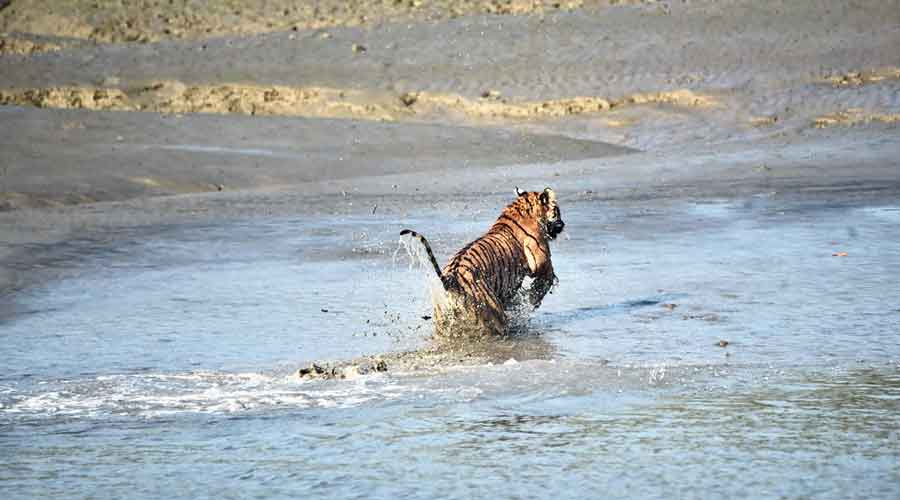The World Wildlife Fund (WWF) in Bengal will formally request the chief wildlife warden of Bengal seeking footage of cameras installed across the Sunderbans in a bid to understand why royal Bengal tigers have of late been entering human habitats frequently.
The decision by the WWF- comes after tigers were recorded entering at least three human habitats within the past week.
“We need footage from the deep jungles to find out the reason. So, we will seek camera footage from the Sunderbans in order to observe the movement of tigers or other animals. We will write to the chief wildlife warden of Bengal on Tuesday,” said Anamitra Anurag Danda, the director of the WWF’s Sunderbans reserve.
Senior officials in the WWF said the footage would prove important in a study on the largest tiger reserve of the country in light of biodiversity, comprising several species.
“There are many things to observe from the camera footage. Many can claim that there is a scarcity of food for tigers inside the forest. But we have to confirm it before commenting on it,” said Danda.
The forest department has installed hundreds of digital-trap cameras inside the core areas of the forest to observe and monitor animals, including tigers. Those cameras also help to keep the tiger count updated. According to reports, there are presently as many as 96 tigers in the Sunderbans.
“Lack of prey in core areas lures tigers to swim towards human habitats where they can find grazing cows or other animals,” said Pranabesh Sanyal, former chief wildlife warden and ex-chief environment officer of Bengal.










